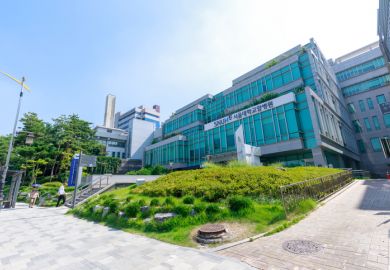Chandak Sengoopta is fascinated by a pioneering surgeon with a dark side
If time machines existed, many people would no doubt wish to visit the 18th century, but not to sample its medicine. Conventional wisdom has always been that doctors of that age knew little real anatomy or physiology and the treatments they prescribed were brutal and ineffective.
Historians have laboured long and hard to correct such simplistic notions, but there is always more to be done, especially with regard to the century's reputation for medical research, which, for most people, begins and ends with Edward Jenner and vaccination. Even Jenner's beloved teacher, the surgeon John Hunter (1728-93), is not a well-known name outside specialist circles, although that scandalous situation should be corrected by Wendy Moore's marvellous biography.
Hunter, a largely self-taught man with no great love for books, devoted his life to studying the book of nature, beginning with the human body but reaching far beyond it. He began as dissection assistant to his brother, the entrepreneurial William. Although born in the same humble circumstances as John, William went to university and set up an anatomy school for surgeons in London. Gradually, he also established himself as London's favourite accoucheur . John, too, would eventually count many of the London elite among his patients, but he would never acquire the gentlemanly persona of his brother. His rough speech and rougher temper were well known, and although he was married to a poet who hosted gracious receptions for the great and the good, he preferred to spend his evenings cutting up corpses.
To obtain corpses, Hunter associated with grave-robbers - the fabled resurrectionists who kept anatomists supplied with bodies before the Anatomy Act of 1832 made it unnecessary to go to such lengths. Hunter also had much to say on disease in living beings - and those beliefs, as with all his opinions, were grounded in his own research. That did not, however, guarantee accuracy. Gruesome and dangerous self-experimentation did not save him from the erroneous belief that gonorrhoea and syphilis were different manifestations of the same disease. What distinguished him from most surgeons of his age was not so much his results, but his distrust of theory and speculation.
Hunter's interests were never confined solely to human anatomy and pathology; they covered all kinds of animal life. The resurrection-men were joined by animal dealers; and, later still, Hunter's obsessive urge to collect interesting specimens led him into even shadier dealings. In the years of his greatest fame, he was almost a Jekyll-and-Hyde figure: a distinguished surgeon by day (with patients ranging from philosopher David Hume to the humblest inmate of St George's Hospital) but something rather darker by night. As Moore points out, it was entirely appropriate that the layout of Dr Jekyll's house in Robert Louis Stevenson's tale was based on Hunter's Leicester Square residence. Unlike Edward Hyde's depredations, however, Hunter's murky practices had a higher purpose.
Although he earned his living as a surgeon and teacher of anatomy, his soul and virtually all his income were devoted to the pursuit of biological knowledge. Hunter was an insatiable collector, and he assembled anatomical and pathological specimens summing up and moving well beyond all that was known at that time of biology and the order of life. Hunter, Moore suggests, was developing a whole new theory that eschewed notions of divine creation and adopted a more evolutionary view. Evolutionary theories were not unknown in Hunter's time - Charles Darwin's grandfather Erasmus was an exponent of such a hypothesis - but what was special to Hunter was the material on which he based his ideas: his unrivalled collection of specimens. After Hunter's death, his intellectual heir Everard Home plagiarised his writings and then burnt all his papers. But even Home could not destroy the collection. It was purchased for a ludicrously small sum by the Government and entrusted to the Company of Surgeons, which was soon to be transformed into the Royal College of Surgeons. It has been one of the jewels in the college's crown ever since, with successive curators adding to it. It has recently been opened to the public after a £3 million refurbishment, and Moore's biography, therefore, comes at the right moment.
Moore has immersed herself in the works of Hunter and his contemporaries. Virtually every page of her biography bears witness to her knowledge, percipience and devotion to the task. It cannot have been an easy job - more than 200 years after his death, it is still difficult to get the full measure of Hunter and his work. Moore's detailed and sympathetic portrait will do much to make Hunter a less enigmatic figure.
Although some of her conclusions will no doubt come to be expanded and modified by future scholars, this book should be the point of departure for anybody interested in the life and work of this most extraordinary of Georgians.
Chandak Sengoopta is senior lecturer in the history of science and medicine, Birkbeck College, University of London. The Hunterian Museum, 35-43 Lincoln's Inn Fields, London WC2A 3PE, opened to the public on February 12.
The Knife Man: The Extraordinary Life and Times of John Hunter, Father of Modern Surgery
Author - Wendy Moore
Publisher - Bantam Press
Pages - 482
Price - £18.99
ISBN - 0 593 05209 9
Register to continue
Why register?
- Registration is free and only takes a moment
- Once registered, you can read 3 articles a month
- Sign up for our newsletter
Subscribe
Or subscribe for unlimited access to:
- Unlimited access to news, views, insights & reviews
- Digital editions
- Digital access to THE’s university and college rankings analysis
Already registered or a current subscriber? Login



